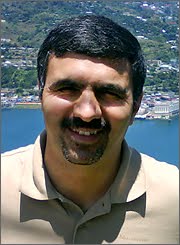In the last 30 years, the production of chicken feather was increased from 1,5 to 5 million tons per year. So the question is what to do with this feather! Our PhD candidate Gergely Forgacs took this question seriously as part of his PhD thesis and he is defending a few days. His focus was on biogas. The feather from slautherhouses can produce about 180 m3 biogas (methane) per ton of the material (volatile solid), and he could improve it to 400 m3 methane gas. Let's hope he can produce well both the biogas and also a PhD title for him from the feather :)
The thesis:
Biogas Production from Citrus Wastes and Chicken Feather: Pretreatment and Co-digestion
His publications:
1) Pourbafrani, Mohammad; Forgács, Gergely; Sárvári Horváth, Ilona; Niklasson, Claes and Taherzadeh, Mohammad J.: Production of biofuels, limonene and pectin from citrus wastes. Bioresource technology, 2010 101, 4246-4250.
2) Forgács, Gergely; Pourbafrani, Mohammad; Niklasson, Claes; Taherzadeh, Mohammad J. and Sárvári Horváth, Ilona.: Methane production from citrus wastes: process development and cost estimation. Journal of Chemical Technology and Biotechnology, 2012 87,250-255.
3) Forgács, Gergely; Alinezhad, Saeid; Mirabdollah, Amir; Feuk-Lagerstedt, Elisabeth and Sárvári Horváth, Ilona.: Biological treatment of chicken feather waste for improved biogas production. Journal of Environmental Sciences, 2011 23,1747-1753.
4) Forgács, Gergely; Lundin, Magnus; Taherzadeh, Mohammad J. and Sárvári Horváth, Ilona.: Pretreatment of chicken feather waste for improved biogas production. Submitted.
5) Forgács, Gergely; Niklasson, Claes; Sárvári Horváth, Ilona and Taherzadeh, Mohammad J. Methane production from feather waste pretreated with Ca(OH)2: process development and economical analysis. Submitted.

(The cover page of the thesis)

(The global production of chicken feather, extracted from the thesis)







